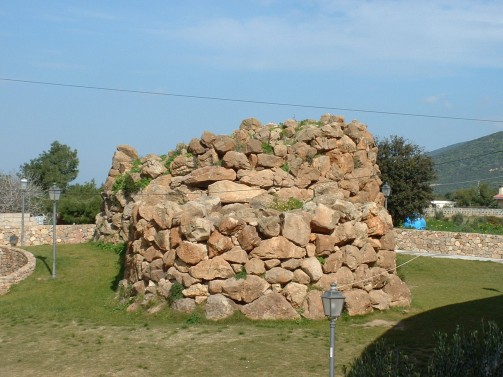During the Middle Bronze Age (about 1500-1300 years B.C.), the landscape of Sardinia is characterized by the rise of tholos nuraghi: monumental towers built with cyclopean stones without the aid of mortar, equipped inside with circular chambers with ogival domed vaults (tholos). The word nuraghe, of pre-Indo-European origin, most likely comes from the language spoken by its ancient builders and could mean “hollow pile of stones inside.” In its most common form, the nuraghe looks like an inverted truncated cone, crowned originally by a projecting terrace supported by corbels. The Arresi nuraghe, built of rough blocks of dolomitic limestone, exemplifies a particular type of complex nuraghe called “a tancato“: a main tower or keep and a smaller secondary tower are joined together by two curvilinear wall arms enclosing an open-air courtyard. The monument is accessed through a short corridor, provided laterally with two niches, which leads into the disengagement courtyard and through this to the two towers. Striking is the gigantic monolithic lintel of the entrance to the keep, which leads into a wide corridor on either side of which opens, on the right, a narrow curvilinear blind and, on the left, a narrow, steep staircase connection to the original terrace, now collapsed along with the vaults of the two towers. The keep chamber measures about 5 m in diameter and is enlarged at the base with three niches arranged in a cross pattern cut into the wall thickness.









